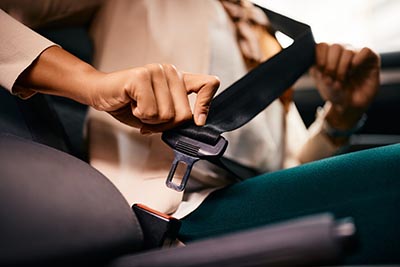
According to the latest federal crash data, confirmed smartphone use accounts for about 12 percent of all fatal crashes involving a distracted driver. Although it is widely accepted that distracted driving crashes caused by cellphone use are highly underreported, the data clearly indicates there are many other distractions that warrant our attention as well.
“There is no doubt that drivers are uniquely and dramatically distracted by their phones but AAA wants to take this moment to remind drivers that the list of other distracting behaviors is long. Too long. And too many lives are being lost as a result,” says Morgan Dean, spokesperson for AAA Mid-Atlantic in Virginia.
In fact, there are 18 possible causes of distracted driving listed on the standardized crash reporting forms investigators are required to fill out – and only three of them refer to a mobile phone. Other distractions include those caused by passengers, drivers adjusting climate or audio controls, reaching for something, eating or drinking and distracting activity outside the vehicle, such as a crash scene.
An analysis of data from the Virginia Tech Transportation Institute by the AAA Foundation for Traffic Safety revealed that taking your eyes off the road for more than two seconds doubles your risk of a crash.
By the numbers
Fatalities on our nation’s roadways have jumped dramatically in the last few years.
Due to incomplete and likely underreported data, no one knows exactly how many fatal crashes are caused by driver distraction. However, the National Highway Traffic Safety Administration estimates that driver distraction is a factor in almost 9 percent of fatal crashes.
Analysis of the latest data from NHTSA’s Fatality Analysis Reporting System found that:
- In 2020, there were more than 3,000 people killed in motor vehicle crashes involving drivers reported by the police as distracted.
- Of those killed in crashes reported as involving a distracted driver, almost 20 percent were between the ages of 25-35.
- In Virginia in 2021, distracted driving was a factor in more than 20,000 crashes, causing 117 deaths and 11,297 injuries. (DMV preliminary data)
Pedestrian deaths
Pedestrian deaths are skyrocketing and distracted driving has been identified as a contributing factor in many of those crashes.
- In 2020, there were 480 pedestrians, 83 cyclists, and 14 other non-occupants killed in crashes that involved a driver who was reported to be distracted.
- And, in the first six months of 2021, the latest data available, pedestrian deaths nationwide increase by 17 percent over the same period the year before.
Don’t Drive Intexticated
While the phone alone is not to blame for many of the distracted driving fatalities, there are still hundreds of lives lost each year because someone felt the need to answer a call, send a text or read an email. In its annual survey about driver behaviors – the Traffic Safety Culture Index – the AAAFTS found:
- about 25 percent of drivers surveyed report typing or sending a text message or email within the past month
- more than 1 in 3 report reading a text or email while driving within the past month
This is why AAA launched its ‘Don’t Drive Intexticated’ campaign in 2019, reminding all drivers that just as they would not drive intoxicated, driving ‘intexticated’ is also a risk.
AAA is urging drivers to put their phones down, look up and limit all distractions.
Slow down, move over
Distracted drivers are unlikely to see first responders working at the roadside. ‘Move Over’ laws exist in all 50 states and – while the laws vary from state to state – generally speaking, drivers are required to slow down and move over a lane any time there is a first responder working at the roadside. This typically includes police, fire, ambulances, tow vehicles and DOT or construction workers.
According to preliminary data from DMV, there were 4,854 crashes in Virginia work zones in 2021, up 29% from 2020 and up 25% from 2019. Twenty-eight people were killed in Virginia work zone crashes last year. That’s up 154% from the 11 fatalities in 2020 and up 64% from the 17 fatalities in the pre-pandemic days of 2019.
“It seems fitting that Distracted Driving Awareness Month intersects this week with National Work Zone Awareness Week because distracted driving puts those who work at the roadside at greater risk,” Dean notes. “But the growing number of lives lost clearly illustrates that distracted driving in all its forms needs greater attention year round.”
AAA tips to eliminate distracted driving
- Fully focus on driving. Do not let anything divert your attention, actively scan the road, use your mirrors and watch out for pedestrians and cyclists.
- Put aside your electronic distractions. Don’t use cell phones while driving – handheld or hands-free – except in absolute emergencies. Never use text messaging, email functions, video games or the internet with a wireless device, including those built into the vehicle, while driving.
- Make adjustments before you get underway. Address vehicle systems like your GPS, seats, mirrors, climate controls and sound systems before hitting the road. Decide on your route and check traffic conditions ahead of time.
- If you have passengers, enlist their help so you can focus safely on driving.
- If another activity demands your attention, instead of trying to attempt it while driving, pull off the road and stop your vehicle in a safe place. To avoid temptation, power down or stow devices before heading out.
- As a general rule, if you cannot devote your full attention to driving because of some other activity, it’s a distraction. Take care of it before or after your trip, not while behind the wheel.










